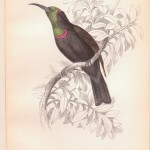Kinds Of Hawks
Read about the kinds of hawks out there! Hawks belong to the family Accipitridae, which in turn is a part of the Accipitriformes group where nighttime predator birds belong. Hawks are known to have hooked bills and sharp nails, and may vary in size from small to large. They tend to glide around in the sky when searching for prey.
Close relatives of hawks include eagles, harriers, vultures and kites. Like these other birds, the various kinds of hawks are carnivorous. Hawks prefer to eat small animals such as mice, squirrels, field rodents and snakes. Some hawks are rather specific in their choice of prey. One good example is the preference of the red-shouldered hawk for small-sized birds such as doves, as well as critters and bugs.
The different kinds of hawks are classified into several genera, including Megatriorchis, Buteo, Accipiter, Melierax, Micronisus and Urotriorchis. Among these, hawks from the genera Buteo and Accipiter are the most abundant.
Accipiter sp. covers goshawks (21 species, two of which are extinct), sparrowhawks (20 species), the sharp-shinned hawk (Accipiter striatus, along with subspecies chionogaster, ventralis and erythronemius) and other kinds of hawks. The main distinguishing characteristics of accipiters are the rounded and short wings, as well as the way they take flight. The tails resemble rudders and may show striped patterns that differ from one species to another. Accipiters are among the most agile predatory birds in a forest, darting in and out of thick branches to pursue prey or to fight with other predators.
Accipiters can maneuver through large tree trunks and branches quickly while on the hunt. They occasionally soar like other kinds of hawks (e.g. Buteo sp.), but the most common way of flight involves flapping the wings several times before gliding.
The Buteo genera is characterized by a soaring pattern of flight as well as broad wings and fan-like tails. The wide tails distinguish these birds from other kinds of hawks in the Accipiter genus, which have elongated tails. The broad wings are meant for soaring up and gliding while looking for prey. Buteo hawks are known as very effective predators because they can glide for hours during a hunt and find the best prey. They can soar faster when the air currents are favorable. This flight behavior in combination with the well-renowned eyesight of hawks make Buteo species more efficient than other birds of prey, including those in their own taxonomic family.
Recent classification experts placed 28 to 35 species under this genus, but the exact number of species under this genus is still up for debate because of different factors. The genus has representative species all over the world except in the Australian continent. The initial confusion in the classification of the Buteo genus has a lot to do with the morphological diversity of some species.
In the end, several species are placed under different distinct groups on the basis of their wingspan and tail length. The first group comprises the species with longer tails and smaller wings, magnirostris, nitidus and platypterus. Slightly larger hawks belong to the second group, including leucorrhous, brachyurus and lineatus species. Larger species such as albicaudatus, regalis and hemilasius belong together. The most widespread hawk in the USA and Canada is Buteo jamaicensis, also known as the redtailed hawk.






